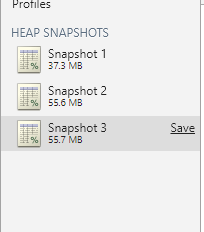I've noticed this in my project as well, though I use a sllightly different version of the gltf loader. When I unmount/unload any gltf object, I run it through a function as below to make sure to dispose of any material/geometry/textures.
Could add this somewhere to the a-frame source but not sure where would be appropriate or if there is a simpler way of doing it.
export const disposeObject3D = object => {
object.traverse(obj => {
if(obj.material){
obj.material.dispose();
if(obj.material.map){
obj.material.map.dispose();
}
if(obj.material.lightMap){
obj.material.lightMap.dispose();
}
if(obj.material.aoMap){
obj.material.aoMap.dispose();
}
if(obj.material.emissiveMap){
obj.material.emissiveMap.dispose();
}
if(obj.material.bumpMap){
obj.material.bumpMap.dispose();
}
if(obj.material.normalMap){
obj.material.normalMap.dispose();
}
if(obj.material.displacementMap){
obj.material.displacementMap.dispose();
}
if(obj.material.roughnessMap){
obj.material.roughnessMap.dispose();
}
if(obj.material.metalnessMap){
obj.material.metalnessMap.dispose();
}
if(obj.material.alphaMap){
obj.material.alphaMap.dispose();
}
}
if(obj.geometry){
obj.geometry.dispose();
}
});
}
Description:
A loaded model (gltf-model) doesn't unload from memory after it removed from DOM.
How to reproduce:
Expected behavior: amount of used memory decreases Real behavior: amount of used memory don't change